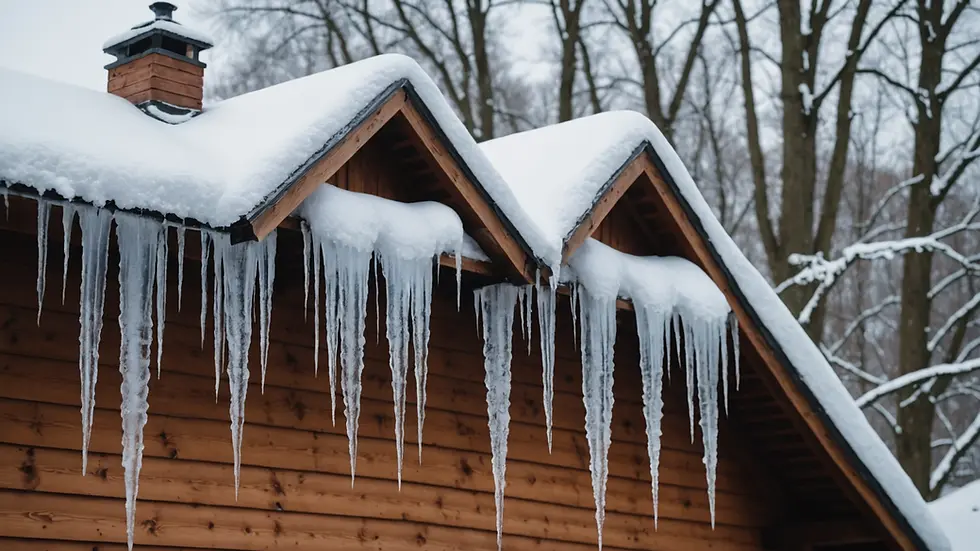6 Essential Tips for Managing Roof Snow Load: A Homeowner's Guide
- highimpactinspecti
- Jan 2
- 3 min read
Winter can be a beautiful season, but it also brings challenges, particularly when it comes to snow accumulation on roofs. Roof snow load refers to the weight of the snow resting on your roof, which can pose risks like structural damage if it surpasses safe limits. For homeowners, understanding how to manage roof snow load is vital for ensuring safety and protecting your home investment.
1. Know Your Roof's Snow Load Capacity
Every roof is built with a different snow load capacity dictated by its design, materials, and local building codes. For example, roofs in regions where heavy snowfall is common might be engineered to hold up to 60 pounds per square foot, while others may only support 20 pounds per square foot. To effectively manage snow load, familiarize yourself with your roof's limits. Consulting with local building authorities or a structural engineer is highly recommended to ensure you understand the specific capacity applicable to your home.
2. Regularly Inspect Your Roof
Regular roof inspections during winter are crucial. Snow accumulation may not always be obvious, especially after heavy snowfalls. Look for signs of sagging in your roof structure, which could indicate excessive weight. For instance, if you notice a dip of more than one inch, it may warrant immediate action. Additionally, check for ice dams building up near the roof edges; these can trap moisture and increase the risk of leaks. Inspect your roof after any snowfall, especially if it exceeds 6 inches, as this can significantly increase the load on your structure.
3. Remove Excess Snow
If you observe that snow is piling up and becoming too heavy, removing it is necessary. Use a roof rake with a long handle to carefully pull snow down from the edges—aim for clearing at least the first 3 feet from the edge to reduce load. Avoid climbing onto the roof, as doing so can lead to falls or further strain on the structure. Focus on areas where snow tends to collect, such as valleys and overhangs, which often trap snow and increase weight.

4. Ensure Proper Insulation and Ventilation
Proper insulation and ventilation are key factors in maintaining temperature balance on your roof. Inadequate insulation can allow heat from your home to escape, melting the underlying snow and leading to ice dams as water refreezes at the roof edges. A well-insulated attic can reduce heat loss by up to 30%, lowering the risk of snow load issues during winter. Ensure your attic has proper airflow with vents installed at both the soffit and ridge to maintain optimal temperatures and minimize melting snow.
5. Tree Maintenance
Nearby trees can add unnecessary weight to your roof during winter. Overhanging branches often drop additional snow and debris, which can lead to excess load and potential damage. Regularly trim branches that are close to your home, especially if they are within 10 feet of your roof. This proactive maintenance can significantly reduce the risk of the additional weight from accumulated snow.
6. Prepare for Ice Dams
Ice dams form when snow melts and refreezes, blocking water from draining off your roof. This can lead to leaks and water damage inside your home. Good insulation in your attic can reduce the risk of ice dams by keeping your roof's temperature steady. If ice dams are a recurring issue, consider installing heated cables along your roof edges, which can effectively melt accumulating snow. Additionally, regularly clearing snow from gutters and eaves helps maintain drainage and reduces the chances of ice dam formation.

Safeguarding Your Home
Managing roof snow load might feel overwhelming, but by following these tips, you can make it manageable. Start by understanding your roof's snow load capacity, keep up with inspections, and implement practical snow removal strategies. Taking the time to prepare and maintain ensures your roof stays safe and sound throughout the winter. A well-cared-for roof not only protects your home but also affords you peace of mind during the snowy months.




Comments